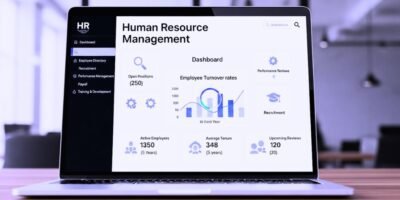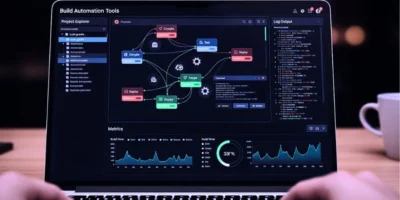In today’s globalized and interconnected business landscape, supply chain transportation plays a crucial role in the timely and efficient movement of goods from suppliers to customers. It encompasses the planning, executing, and managing of various transportation modes and routes to ensure a smooth flow of products throughout the supply chain. This article delves into the supply chain transportation concept, its key components, challenges, and strategies to optimize logistics operations.
Understanding Supply Chain Transportation
Supply chain transportation refers to the physical movement of goods and materials across different points within the supply chain, including suppliers, manufacturers, warehouses, distribution centers, retailers, and end customers. It involves selecting the appropriate transportation modes, routes, carriers, and logistics partners to ensure timely delivery, minimize costs, and meet customer expectations. Supply chain transportation is critical to supply chain management, influencing overall efficiency and customer satisfaction.
Key Components of Supply Chain Transportation
Several key components need to be considered regarding supply chain transportation to ensure smooth and efficient operations.
Transportation Modes
Supply chain transportation involves selecting the most suitable modes based on distance, product characteristics, cost, and delivery requirements. Common transportation modes include road (trucks and vans), rail, air, sea, and intermodal (combining multiple ways). Each method has advantages and considerations regarding speed, cost, capacity, flexibility, and environmental impact.
Route Planning and Optimization
Route planning and optimization are essential to minimize transportation costs, reduce transit times, and ensure efficient resource use. They involve determining the optimal routes, considering distance, traffic conditions, congestion, tolls, and regulations. Utilizing route optimization software and leveraging real-time data and analytics can help identify the most efficient routes and adapt to changing conditions.
Carrier Selection and Management
Choosing the right carriers and logistics partners is crucial for supply chain transportation. When selecting pages, organizations consider reliability, capacity, pricing, geographic coverage, and track record factors. Effective carrier management involves establishing strong partnerships, monitoring carrier performance, ensuring compliance with service level agreements (SLAs), and fostering open communication and collaboration.
Freight Consolidation
Freight consolidation involves combining multiple shipments from different origins into a single transportation unit. Consolidation optimizes transportation efficiency by maximizing vehicle utilization and reducing empty miles. It helps minimize costs, improve transit times, and reduce the environmental impact of transportation. Collaboration and coordination with suppliers and logistics partners are essential for successful freight consolidation.
Shipment Tracking and Visibility
Shipment tracking and visibility enable organizations to monitor the movement of goods in real-time and provide accurate and timely information to customers. Advanced technologies, such as GPS tracking, RFID, and IoT devices, facilitate end-to-end visibility across the supply chain. Real-time tracking enhances operational efficiency, reduces shipment delays, and enables proactive issue resolution.
Challenges in Supply Chain Transportation
Managing a supply chain transportation system can be challenging due to various factors, such as unpredictable weather conditions, unexpected disruptions in the supply chain, and the need to balance cost and efficiency.
Transportation Costs
Transportation costs are a significant challenge in supply chain management. Fluctuating fuel prices, rising labor costs, tolls, regulations, and capacity constraints impact transportation costs. Organizations must optimize transportation routes, consolidate shipments, negotiate favorable contracts with carriers, and leverage data-driven insights to manage costs effectively.
Transportation Network Complexity
Supply chain transportation involves managing complex networks with multiple nodes, stakeholders, and dependencies. Coordination among various entities, such as suppliers, carriers, warehouses, and customers, ensures seamless operations. Effective communication, collaboration, and information sharing are critical to overcoming network complexity challenges.
Capacity Constraints
Capacity constraints in transportation can lead to delays, increased costs, and customer dissatisfaction. Transportation capacity varies based on seasonality, market demands, and driver shortages. Organizations must establish relationships with multiple carriers, maintain flexibility in transportation strategies, and proactively manage capacity constraints to meet customer demands.
Risk Management
Supply chain transportation is vulnerable to various risks, including natural disasters, labor strikes, political instability, and disruptions in transportation networks. Organizations must implement risk management strategies, develop contingency plans, and establish resilient supply chains to mitigate potential disruptions and ensure business continuity.
Optimizing Supply Chain Transportation
Optimizing supply chain transportation requires a strategic approach that considers all the variables involved in the process. It’s important to develop contingency plans to mitigate disruptions and focus on improving efficiency while minimizing costs.
Integrated Technology Solutions
Leveraging advanced technology solutions such as Transportation Management Systems (TMS), real-time tracking systems, and predictive analytics enables organizations to optimize supply chain transportation. These tools provide visibility into transportation operations, facilitate data-driven decision-making, automate processes, and improve stakeholder collaboration.
Collaboration and Partnership
Collaboration and partnership among suppliers, carriers, and logistics providers are essential for effective supply chain transportation. Building strong relationships, fostering open communication, and aligning goals and objectives help streamline operations, enhance efficiency, and drive continuous improvement across the supply chain.
Continuous Process Improvement
Organizations should adopt a continuous improvement mindset to optimize supply chain transportation. Regularly assessing transportation processes, gathering feedback, analyzing performance metrics, and implementing improvements enable organizations to identify inefficiencies, reduce costs, enhance service levels, and respond to changing market dynamics.
Sustainable Transportation Practices
Incorporating sustainable transportation practices minimizes the environmental impact of supply chain operations. Organizations can explore alternative modes, promote intermodal transportation, optimize vehicle routes, and adopt energy-efficient practices. Sustainable transport reduces carbon emissions and can lead to cost savings and enhanced corporate social responsibility.
Conclusion
Supply chain transportation is vital in ensuring the efficient and reliable movement of goods throughout the supply chain. By considering transportation modes, route optimization, carrier selection, freight consolidation, and leveraging technology solutions, organizations can optimize supply chain transportation, reduce costs, enhance customer satisfaction, and gain a competitive advantage.
Overcoming challenges in transportation costs, network complexity, capacity constraints, and risk management requires a proactive and collaborative approach. With effective supply chain transportation management, organizations can enhance operational efficiency, improve supply chain performance, and meet customer expectations in today’s dynamic business environment.













